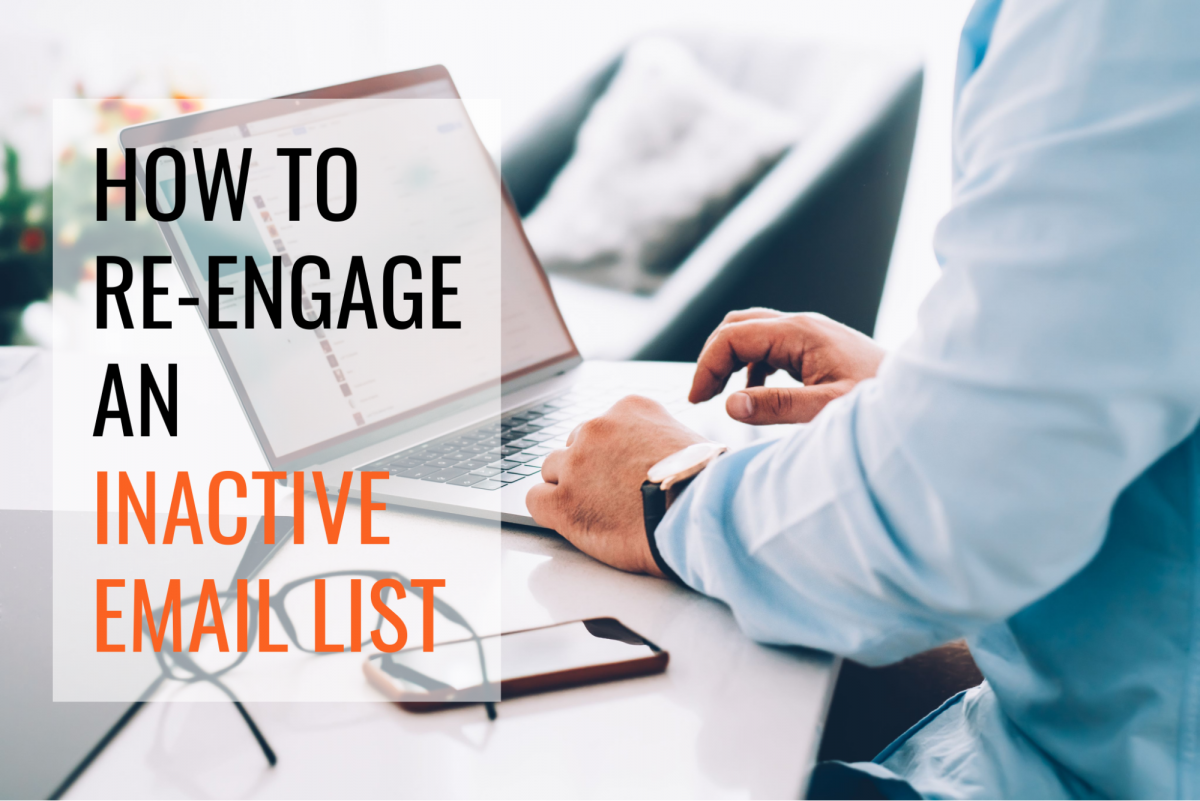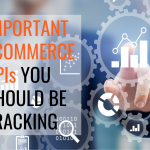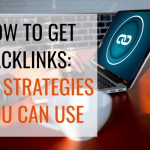There’s both good and bad news when it comes to inactive email lists.
Let’s start with the bad: People are not engaging with your email newsletter content as much as you’d like. For an online business, that’s like leaving money on the table. Fewer eyeballs on your products means less brand recall and fewer sales.
Now for the good news: You’ve already done the difficult task of building a list. You were able to create persuasive email sign-up forms and effective landing pages that people were comfortable enough to let you into their sacred digital space, aka their email inbox. The only thing left to do now is to rekindle the spark that your subscribers used to have when they first signed up.
Fortunately, bringing a dead email list back to life isn’t too difficult these days, as long as you plan your email marketing strategy carefully and use newsletter tools that will make the work easier for you.
Let’s dive into how you can do that.
Benefits of Email Newsletters for Ecommerce Businesses
As an online business, it’s important to show up in the online spaces where your potential customers hang out. Many small business owners immediately think of social media, but out of all digital marketing channels, email marketing actually has the highest ROI at 73%. It’s also rated by marketers as the most effective digital media channel.
Why Do People Stop Reading Email Newsletters?
Hubspot says that on average, a business’ email database naturally declines by 22.5% annually. People can lose interest or become inactive because of the following reasons:
- The lead magnet or signup offer didn’t attract the “right” customers. It may have also attracted many people who only wanted a freebie.
- The company sends too many email newsletters, with most of them being marketing emails.
- The subject lines hype up the subscriber, but when they open the email it doesn’t deliver what was promised or implied.
- The subject lines don’t grab the attention of the newsletter subscribers.
- The content is irrelevant and impersonalized.
- The emails aren’t adapted to mobile devices.
Now on to the big question:
Should You Remove People from Your List?
If you want your email campaigns to be effective, you’ll have to clean up your subscriber list first. Look at your database, segment your subscribers, and remove ‘inactives’.
Content marketer Andrew Nathan defines inactives as anyone who has not responded, opened, clicked, or acted on any email sent in the past 6-12 months. A typical email list has around 60% of inactive subscribers. Email marketing campaigns take time and money to implement, so having a huge chunk of inactive subscribers is a huge loss in terms of engagement, revenue, and resources.
Inactive subscribers also skew your analytics, showing you an incorrect picture of your marketing efforts. When you remove inactives, you’ll have a better understanding of your target audience.
Here are just a few examples of segments you might want to consider:
- Subscribers who visit your website and consume your content regularly, but have never purchased. With the right offer, they have the potential to become paying customers.
- Past customers who haven’t engaged with your content or site since they purchased. This is a segment you don’t want to lose. You can try to win them back by sending personalized content and offers.
- Users who just signed up to get a freebie and never interacted with your brand again. There’s a big debate among email marketers about what to do about this group. Some are on Team Remove, some are on Team Keep and Try Some More. At the end of the day, it’s up to you to decide what’s best for your business.
Get our How to Re-engage an Inactive Email List - Worksheet delivered right to your inbox.
Tips and Tools for Re-Engaging an Inactive Email List
Here are some tips and tools you can use to bring life back into your email marketing strategy:
Try Personalizing Your Emails
Personalizing an email isn’t just about using the subscriber’s first name, although that’s also important. Personalized content are offers, recommendations, or other types of valuable content that are relevant to a customer. This is where you use the customer data you’ve gathered, such as behavioral data, interests, purchase patterns, and website activity.
Here are some examples of content for a personalized email newsletter:
- Product recommendations based on their favorites and saved items on your website
- Birthday gift offers
- Anniversary discounts for when they joined your email list
- Sharing interesting news articles or a blog post based on their interests
Run Community Events
Hosting events is a great way to re-energize your subscribers and build your community. Aside from informing your subscribers through email, promote upcoming events on your website and social media platforms as well. As a bonus, you can also attract new subscribers. Here are some ideas for re-engagement events:
- Webinars and Livestream Events
- Coaching Sessions, Workshops, or Online Classes
- Q&As
- Interviews with Experts or Influencers
Improve Your Email Content Marketing Strategy
Instead of sending sales pitches all the time, mix it up a bit. Creating memorable emails that leave a good impression helps boost your brand identity. You can do this by injecting some humor or sharing inspirational and educational content.
Here are other ways to improve your email marketing:
- Use witty, attention-grabbing subject lines. Here’s a great Hubspot article on writing effective subject lines.
- Talk about the latest news or trends that are relevant to both your brand and your subscribers’ interests.
- Use clear, simple, and effective calls to action that easily lead customers to where you want them to go.
- Automate email campaigns based on user behavior. Also called “trigger emails” these include welcome emails, thank you emails, transaction receipts, and personalized recommendations. Compared to direct marketing emails, transactional emails have higher click-through rates, average open rates, and can be responsible for up to 20% of email marketing revenue.
Tripwire Marketing
If you’re itching to use email as a sales channel, a great marketing tool to use is “tripwire marketing.” This means offering a low-ticket product or service to encourage existing customers or highly interested website visitors to buy from your store. Drip CMO Emil Kristensen recommends keeping the price below $47. Kristensen says, “The objective isn’t necessarily to generate revenue. Instead, your focus is on building a list of buyers.”
Use Email Newsletter Service Providers
Most email providers share common features such as contact list management, email templates, and tracking capabilities. However, not all email marketing tools are built the same. If you’re not using an automated email marketing platform yet, here are some email marketing service companies to consider and their unique points:
- Constant Contact is an email marketing software that offers customizable email templates that help you drive sales and stay connected to your audience. Constant Contact also offers social media support, allowing you to create social ads, track campaigns, and even respond to comments and messages.
- Sendinblue’s standout feature is its email automation module. You can also send an email newsletter that’s based on a website visitor’s user behavior, interests, and transaction history. Other interesting features are its drag-and-drop email builder, SMS message capability, and Facebook Ads integration.
- Unlike other service providers, Drip is primarily a CRM platform that also offers email campaign automation. It uses the extensive customer data it collects and leverages it to create newsletters that are highly personalized and targeted.
Direct Mail for Re-Engaging Customers
Direct mail still has a place in modern ecommerce marketing. By giving people a physical, tangible experience, businesses can create lasting impressions that enhance the customer experience. In fact, one survey shows that 78% of customers visit a brand’s website or look for more info after receiving direct mail.
Here are some creative examples of using direct mail for your business:
- Post Pilot is a company that specializes in personalized postcard campaigns. They create, send, and track automated postcards and even handwritten cards for businesses’ customers. PostPilot uses the power of direct mail to help entrepreneurs reach and retain customers who stopped engaging with digital ads and email.
- Video cards or video brochures are Liquid Crystal Displays (LCD) embedded on a custom printed card or brochure. It delivers your video content straight to your customers’ fingertips. They’re highly customizable and come in soft or hard covers in a variety of sizes.
They’re a great way to make an impression with a customer, but they can be costly. The average prices of video cards are between $17-$45. Small businesses can use them instead to woo back high-value customers that have stopped engaging with their content. The Video Cards, Cards in Motion, and Red Paper Plane are companies that you can check out.
To leverage direct mail, businesses should use strong digital calls to action. Directing people to a digital destination creates a seamless journey from print to digital, improving your brand storytelling and online ordering.
FAQs on How to Re-Engage an Inactive Email List
Here are some frequently asked questions about inactive email newsletter subscribers:
What defines an inactive user?
An inactive email subscriber is someone on your email list who stopped engaging with your emails after a certain time. The type of engagement (opens, clicks, reads) and time frame depends on the marketing goals you set.
How do I keep email subscribers?
To keep your email newsletter subscribers, first address technical issues such as email deliverability and mobile responsiveness. Next, create an email content marketing strategy that’s consistent and adds value to your subscribers’ inboxes.
How do I get rid of inactive email subscribers?
Most email newsletter service providers allow you to archive or remove inactive users easily. Identify your inactive email subscribers and send them an email asking if they want to stay on your list or not. If they don’t respond within a certain time limit, let’s say a week, you can assume they’re not interested.
The Next Steps: Reviving Your Email List
Now that we’ve covered the whys and hows of reviving an email list, here are the next steps to take for a successful newsletter campaign:
Step One: Make sure your emails are getting delivered. Email clients like Google or Yahoo have spam filters that identify content that they think is spammy or harmful. When sending to new subscribers, be extra careful with spam-triggering phrases like “discount,” “% off,” or “free.” Double opt-in confirmations also ensure that your new sign-ups are real and not bot accounts.
Step Two: Run a survey to find out what your customers think about your business. This is a simple yet effective way of re-engaging with your subscribers. Keep it short and ask them what you can do to improve your products or service. Another tip is to use just one target question, making it very easy for them to respond. For longer surveys, consider incentivizing responders.
Step Three: Create an email marketing plan. Your goals should be to increase customer engagement, improve brand loyalty, maximize ROI, and maintain client relationships. Other things to include in your plan are email software and tools, list segmenting, a content schedule, and schedules for regular A/B testings and email list clean-ups.
Email is more than just a channel for sending product launch alerts or ads. With a few tweaks to your goals and content strategy, email can be a powerful sales channel. It’s also a great communication tool for fostering customer relationships and enhancing the buyer’s journey, so make sure you don’t neglect it in your ecommerce marketing strategy.
Need help finding effective strategies to scale your business? Reach out now for your FREE consultation call and let’s find solutions that’ll help you to get to the next stage of your business’ growth.
Get our How to Re-engage an Inactive Email List - Worksheet delivered right to your inbox.






